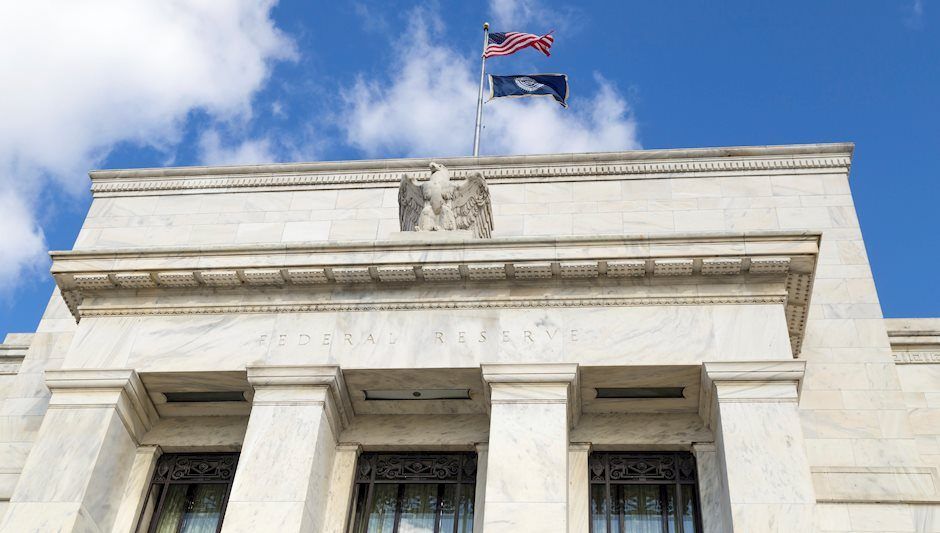Investors are aware of the Fed's bark, but are not pricing in their bite just yet

US equities rose Thursday, S&P up 1.4%. US10yr yields up 7bps to 2.37%, oil down 3%.
The broader narrative remains unchanged, focusing on central bank policy tightening as markets price in multiple 50bp Fed rate hikes.
Turbulence in bond markets and flattening yield curves have gotten a fair bit of attention, with market participants split on whether it is signalling recession. Tightening financial conditions are also increasing scrutiny on corporate credit amid relentless outflows, weakness in junk bonds, and rising borrowing costs.
But looking at-risk assets as a whole in the context of an 8 % drop in the VIX overnight suggests while investors are very cognisant of the Fed's bark, they certainly don't appear to be pricing in their bite just yet.
All the attention in markets is on Fed Funds and how quickly the Fed gets back to neutral. Most investors have been able to pre-price that and are seemingly OK with 50pb hikes.
However, the considerable risk comes from the balance sheet. At around $9 trillion, it is too large of an unwind for the geopolitical circumstances. There's $1.8 trillion in the RRP available cash simply not coming back to the Fed every night.
Since the global financial crisis, the Feds liquidity injections have been responsible for colossal reach for risk. The reverse is likely to hold court as the Fed pulls back.
Front-end yields are in the wrong place for sustainable risk markets, but removing the balance sheet will make markets even more susceptible.
Investors will then need to bear the burden of the Fed's decision-making out of necessity.
Oil
The risk of disruption to Russian oil production keeps prices high despite any formal announcement to embargo Russian crude by any significant consumer.
Only the US and UK have said they will no longer purchase Russian crude and products (~900kb/d in aggregate).
Oil is trading a touch lower after EU leaders could not table unanimous support for a comprehensive Russian energy embargo. But the fact that oil is only trading a few dollars more down suggests the EU embargo was always a low-probability outcome.
Still, it's tough to be short oil as US inventories continue to dwindle as we are bound to have more supply shocks in the future. Even the outside chance that Germany eventually caves to US Russian oil embargo demands could see markets overshoot to Brent $150 per barrel as volatility and margin calls have caused a sharp drop in oil markets liquidity.
The market continues to reflect on the loss of a significant proportion of Russian oil, as "Twitter sanctions" may have pre-empted official action—energy companies and brokers have voluntarily cut links to Russian oil, fearing the wrath of social media. With that in mind, oil prices could remain very sticky at current levels and eventually push higher when China eases all covid restrictions in catch-up mode to the rest of the world.
Gold
G7 leaders have agreed to clamp down on Russia's ability to sell its gold reserves to support the Ruble launch, a new effort to hinder any attempts by Moscow to evade financial sanctions imposed by the west.
We knew something was cooking with massive demand for gold on Wednesday, but we couldn't put our finger on it exactly. Indeed Russian gold reserves were the 2000 tonne weight hanging over gold markets. Even if Russia were to sell a small portion of the reserves, it would have had massive negative reverberations around bullion markets and compounded by aggressive Fed hikes.
Still, more forceful sanctions on any Russian exports will likely drive inflation higher, which is still supportive for gold markets. Frankly, I would think the cost of living will get exorbitantly more expensive over the next 12 months.
While gold and bond investors don't believe the Fed is now behind the curve, at this point, they are not convinced the Fed will follow through on their "whatever it takes" moment.
Still, buying interest-rate sensitive assets in a rate hike environment is risky.
Gold traders have a $1900 war room backstop, but I think the top side above this year's highs is limited, not to mention unlikely, in my view.
Forex
Market pricing for the Federal Reserve points to very aggressive action this year, so I don't think the rates market questions the Fed's inflation-fighting tenacity. Both the Fed's dots and the market agree that it stands at 2.75%.
But FX markets have long memories and worry about a repeat of 2018/19 when the hiking cycle was interrupted early with the polite "mid-cycle adjustment" rather than the admission of a policy mistake.
And with other central banks who are offered the luxury of a strong economy and are not too worried about hiking rates to stunt inflation, the dollar reaction to a super hawkish Fed remains somewhat muted., except for the JPY.
JPY
Higher energy prices coupled with Japanese fiscal year-end seasonality USDJPY demand support the downside.
BoJ member Kataoka also indicated that monetary policy is unlikely to change in the near term and that a weak JPY is net positive for Japan.
In the absence of pushback from the government, this type of mentality from the central bank underscores the massive monetary policy divergence between the US and Japan.
Author

Stephen Innes
SPI Asset Management
With more than 25 years of experience, Stephen has a deep-seated knowledge of G10 and Asian currency markets as well as precious metal and oil markets.

















